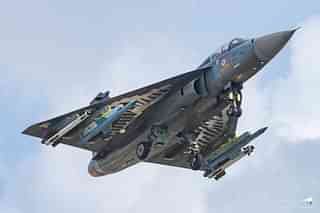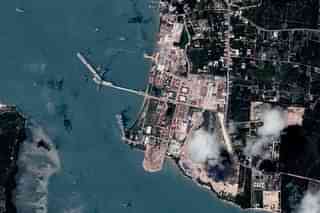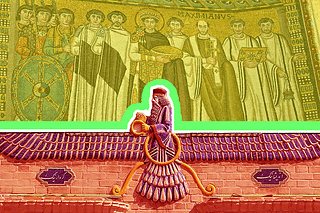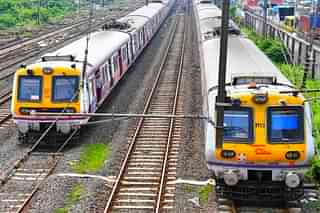World
Why Japan's New Aircraft Carriers Must Be Taken Seriously
Ujjwal Shrotryia
Apr 18, 2024, 11:00 AM | Updated 11:35 AM IST
Save & read from anywhere!
Bookmark stories for easy access on any device or the Swarajya app.
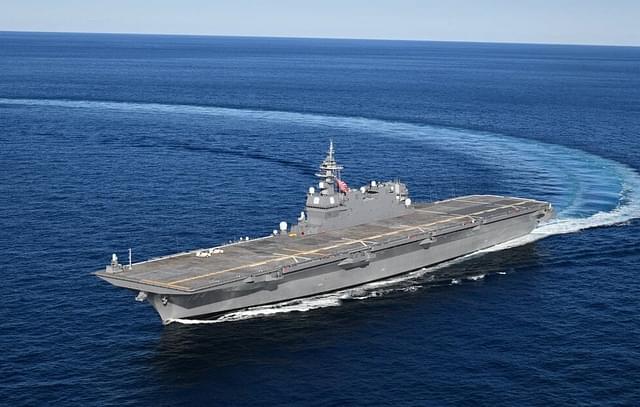
Japan is converting its two existing helicopter carriers — the Izumo class — into fully-fledged aircraft carriers.
Recently, Japan unveiled modifications that Kaga, the second ship of the Izumo helicopter carrier, underwent to make it suitable for fighter operations. First inducted into the Japanese Maritime Self-Defense Force (JMSDF) in 2017, Kaga is the sister ship of Izumo, that was inducted in 2015.
The modifications are being done in phases that include applying a heat-resistant coating on the deck to protect it from the extremely high temperatures of jet blasts, apart from modifying the deck shape from the earlier trapezoid to rectangle design.
Japan plans to operate American-made F-35B jets, a short take-off and vertical landing (STOVL) variant of the conventional F-35A jets from the ships, 42 of which are already on order.
Each ship will be able to operate at least 12 F-35B and 16 helicopters simultaneously.
Moreover, last month Japan loosened its policy restrictions, allowing exports of fighter jets to nations that have signed security pacts with Japan concerning defence equipment and technology transfers, marking a significant shift from its otherwise restrictive war-renouncing constitution.
Furthermore, indications that Japan might join the US-Australia-UK trilateral AUKUS program are gaining ground.
Although Australian Prime Minister Anthony Albanese has dismissed rumours that Japan would join AUKUS, there are strong indications that it may be invited to be part of the second pillar of AUKUS, which entails cooperation for the development of high-end, cutting-edge technologies.
Notably, AUKUS has two pillars.
The first pillar is for the transfer of technology to develop and manufacture nuclear attack submarines (SSNs) for the Australian Navy, and the, second is for co-developing advanced technologies in fields such as Artificial Intelligence/machine learning (AI/ML), cyberspace, and quantum mechanics.
Japan is expected to join the latter.
This shift in Japan's stance from pacifist to more outward-looking has raised serious concerns in Beijing.
The announcement of the completion of the first phase of modifications at Kaga has particularly caused some consternation among the Chinese, who believe these modifications violate the Japanese constitution, which does not allow the JMSDF to have aircraft carriers intended for attacking foreign countries.
The new modifications that allow the operations of the F-35B jets give JMSDF an option to conduct strike operations, if and when necessary.
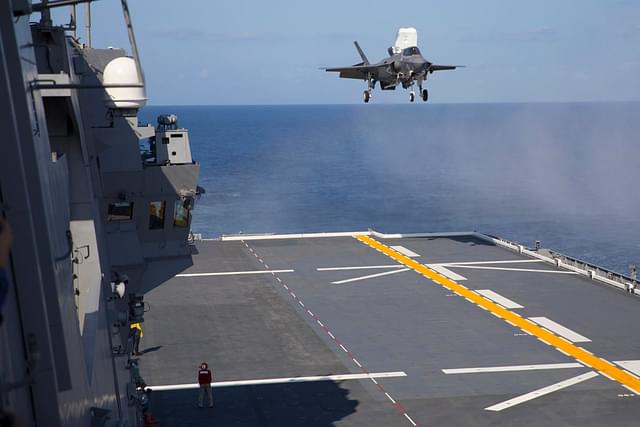
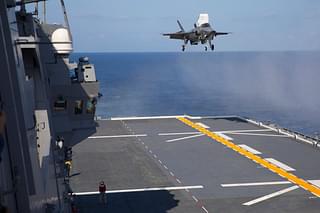
The fifth-generation F-35B jets are also a generation ahead of the J-15 fighter jets fielded by China from its three much larger aircraft carriers — Liaoning, Shandong, and Fujian.
If used strategically, the F-35s can penetrate the formidable and layered Anti-Access/Area Denial (A2AD) air defence umbrella of the Chinese. These upgraded carriers, set to become fully operational by 2027 while carrying their stealthy F-35Bs, will pose a serious challenge to the Chinese People's Liberation Army Navy (PLAN) carrier battle groups.
On top of this, the Japanese are buying several long-range strike missiles that put various high-value Chinese targets at risk.
Early this year (2024), Japan signed a deal worth over $2.3 billion to buy at least 400 Tomahawk land attack cruise missiles from the United States.
These missiles can hit targets at a range of more than 1,600 kilometres.
Another order to buy the Joint Air-to-Surface Standoff Missile - Extended Range (JASSM-ER) for operation from the F-15J fighter jets of the Japanese Self Defense Air Force (JASDF) was also placed. Unlike the Tomahawks, which are ship-launched, these JASSM-ER air-launched and stealthy missiles are capable of evading radar detection and hitting targets over 1,000 kilometers away.
Additionally, Japan is collaborating with the UK and Italy to develop a sixth-generation fighter jet under the Global Combat Air Programme (GCAP). These jets, once inducted into the JASDF, are expected to give Chinese A2AD air defence systems a run for its money.
These strategic posture changes by Japan are therefore ringing alarm bells at the highest levels in China, forcing them to to think hard.
Save & read from anywhere!
Bookmark stories for easy access on any device or the Swarajya app.
Editorial Associate at Swarajya. Writes on Indian Military and Defence.
Introducing ElectionsHQ + 50 Ground Reports Project
The 2024 elections might seem easy to guess, but there are some important questions that shouldn't be missed.
Do freebies still sway voters? Do people prioritise infrastructure when voting? How will Punjab vote?
The answers to these questions provide great insights into where we, as a country, are headed in the years to come.
Swarajya is starting a project with an aim to do 50 solid ground stories and a smart commentary service on WhatsApp, a one-of-a-kind. We'd love your support during this election season.
Click below to contribute.



